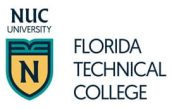Interested in becoming a medical assistant? If you enjoy helping others and want to break into the healthcare field without spending years upon years in school, then this career path can be a sensible choice. After all, the demand for medical assistants across the United States is growing rapidly, with the Bureau of Labor Statistics (BLS) projecting a 15 percent growth between 2023 and 2033 alone.
How do you become a medical assistant? Typically, employers are looking for job applicants with either a formal degree or diploma in addition to a high school diploma (or equivalent). By understanding the differences between a medical assistant diploma and a degree for medical assistant, you can make an informed decision regarding your own career journey.
Understanding Medical Assistant Diplomas and Degrees
In the past, some employers may have hired medical assistants without formal education, offering on-the-job training instead. Today, however, most employers will be looking for applicants with a minimum degree or diploma in medical assisting.
So, what’s the difference between the two?
The Basics of a Medical Assistant Diploma
A medical assistant diploma is a formal education program specifically designed to help students prepare for entry-level roles as medical assistants. Coursework in a diploma program focuses on helping students build the practical, hands-on skills they will use in their everyday work caring for patients.
What Constitutes a Medical Assistant Degree
A medical assistant degree program tends to be more in-depth, with more credit hours and additional coursework. Compared to a diploma program, a degree in medical assistant program may cover practical skills in addition to advanced concepts.
Key Differences Between Diploma and Degree Programs
Both degree and diploma programs can help aspiring medical assistants prepare for successful careers in the healthcare field. However, there are some key differences to note when looking at a medical assistant diploma vs. medical assistant degree.
Duration of Study
Typically, diploma programs take significantly less time to complete than degree programs. The exact duration of a diploma program can vary based on the number of credit hours and whether the student is enrolled part- or full-time, but many of these programs are designed to be completed in a year or less.
A degree program, by comparison, may take closer to two or three years to complete.
Course Content and Specializations
Medical assistant degree and diploma programs can also vary in their course content. Because diploma programs are shorter, coursework tends to be more focused on teaching practical skills that professionals in the field need to use in their everyday work. This includes coursework on medical office procedures, cardiorespiratory care, laboratory procedures, and the like.
On the other hand, a degree program with more credit hours may cover these topics in addition to more specialized or advanced coursework.
Cost Implications
As you can imagine, diploma and degree programs differ in their costs. Because they require fewer credit hours to complete, diploma programs tend to cost less than degree programs, but it’s important to note that per-credit-hour costs can vary from one school to the next. By completing a diploma program, you can spend less money up-front and start earning money as a medical assistant sooner rather than later.
Prospective Career Paths for Diploma and Degree Holders
A foundation in medical assisting can prepare you for several entry-level roles across healthcare settings, depending on the specific requirements of each employer and any additional certifications you pursue.
Employment Opportunities
Graduates of medical assistant diploma or degree programs may qualify for positions such as:
- Clinical Assistants
- Lab Technicians
- Optometric Assistants
These roles, along with traditional medical-assistant positions, can be found in hospitals, physician practices, community health clinics, and select government facilities. Requirements vary by state and employer, so researching credentialing expectations for your target role is essential.
Advancement Potential
Completing a diploma or degree program can position you for a variety of professional certifications. Some credentials, such as Basic Life Support (BLS) Certification and Cardiopulmonary Resuscitation Certification (CPR)—can often be earned while you are still in school and may even be required by externship sites or employers. Others, like the National Certified Medical Assistant (NCMA) exam, typically require proof of program completion or specific work-experience hours. Adding these certifications can broaden your scope of responsibility and help you meet employer or state requirements for certain roles.
Making the Decision: Diploma or Degree?
With so much to think about when comparing medical assisting diploma vs. degree, how can you possibly decide which is right for you? Here are a few things to keep in mind as you weigh your options.
Factors to Consider
When deciding between a diploma and degree for medical assistant, start by thinking about how much time you’re prepared to spend in school before you can start working in the field. If you want to minimize your time (and money) spent in the classroom and are eager to start making a difference in the healthcare field, then a medical assistant diploma may be the better choice.
Likewise, suppose you want the most cost-effective approach to becoming a medical assistant. In that case, a diploma program is typically less expensive than a degree program because it requires fewer credit hours.
Long-Term Career Goals
Of course, you’ll also want to consider your long-term career goals when deciding between a diploma and a degree program. For most people wanting to get into a career in medical assisting, a diploma program is an ideal option. However, if you have plans to eventually earn your BSN (Bachelor of Science in Nursing) or even a Master of Science in Nursing (MSN), then starting with your medical assisting degree may make more sense because you’ll likely be able to transfer those credits to a BSN program down the road.
If you earn a diploma and later decide to pursue a degree, you may be able to transfer some—or even many—of your credits, depending on each school’s policy on transfer credit, accreditation rules, and course equivalencies. Because policies vary widely, it’s best to talk with an admissions counselor to learn exactly which credits can transfer and whether you’ll need to repeat any coursework.
Frequently Asked Questions:
If you still have questions about medical assistant degree and diploma programs, we have answers for you below:
Can I pursue further education after obtaining a medical assistant diploma?
Absolutely. A medical assistant diploma can serve as a stepping-stone to other educational opportunities while still allowing you to begin working in the healthcare field sooner rather than later. It is not uncommon for medical assistant diploma graduates to go on and pursue their associate degrees or even bachelor’s degrees in nursing or related healthcare fields down the road. That said, having some experience under your belt as a medical assistant can serve you well in other higher education programs.
How does a degree affect my certification options as a medical assistant?
Having a degree versus a diploma in medical assisting does not have a significant impact on your certification options in the field. Both a diploma and a degree can prepare you for any number of certification exams, including BLS, first aid, CPR, and NCMA. In most cases, a reputable medical assistant diploma or degree program should also include coursework with certification prep, which could help you better prepare for popular medical assistant certification exams. It is important to note, however, that most degree and diploma programs do not include certification. Instead, this is something you will need to pursue independently outside of your formal education.
Learn More at Florida Technical College
Both diploma programs and degree programs can be viable options to kick-start your career as a medical assistant. At the end of the day, it all boils down to choosing the option that’s right for you based on your own needs and long-term career goals.
If you’re interested in earning your diploma in medical assisting, check out Florida Technical College’s Medical Assistant Technician diploma program, which is designed to be completed in as little as nine months. This career-focused program consists of 47 credit hours that include both traditional coursework and supervised clinical practice, covering such essential topics as laboratory procedures, clinical procedures, medical terminology, and more.
Get in touch to learn more about our Medical Assistant Technician diploma program.
This article presents a general overview of the field of medical assisting, including job opportunities within that field; it does not describe the educational objectives or expected employment outcomes of a particular Florida Technical College program. Florida Technical College does not guarantee that students will obtain employment or any particular job. Some positions may require licensure or other certifications. We encourage you to research the requirements for the particular career you desire.
Sources
https://ftccollege.edu/program/diploma/medical-assistant-technician-diploma/
https://www.redcross.org/take-a-class/bls-training/bls-certification
https://www.bls.gov/ooh/healthcare/clinical-laboratory-technologists-and-technicians.htm
https://www.bls.gov/ooh/healthcare/medical-assistants.htm
https://www.redcross.org/take-a-class/cpr/cpr-training/cpr-certification
https://www.redcross.org/take-a-class/first-aid/first-aid-training/first-aid-certification



